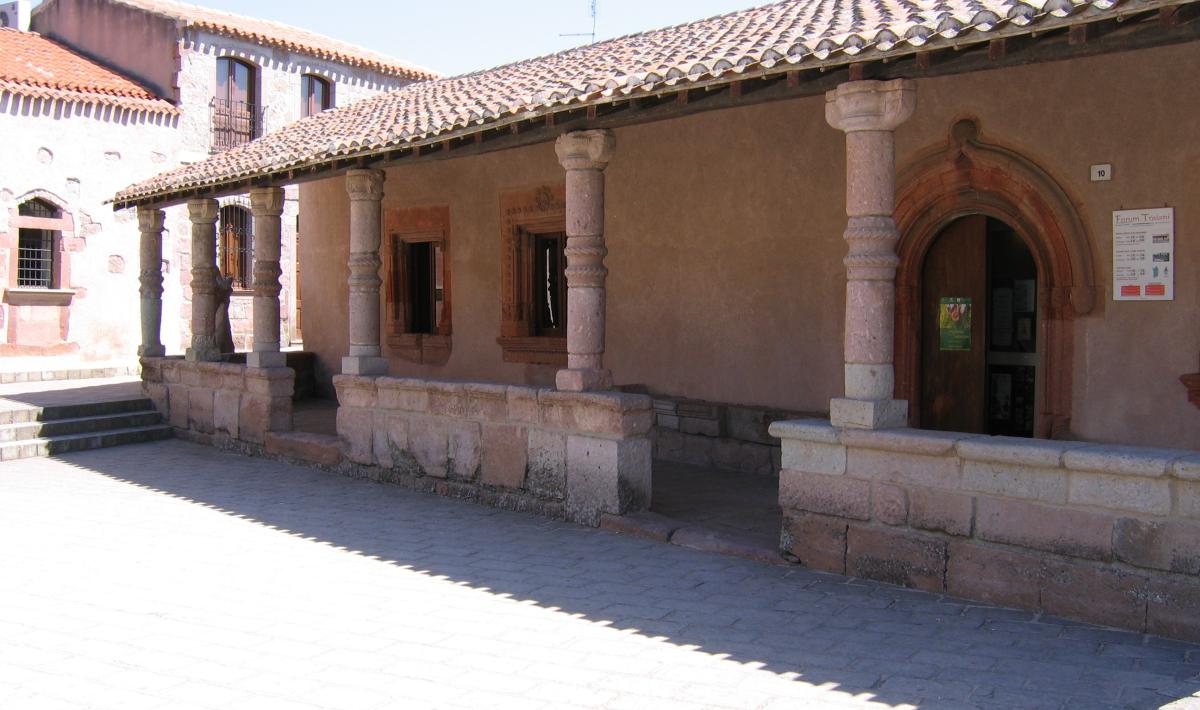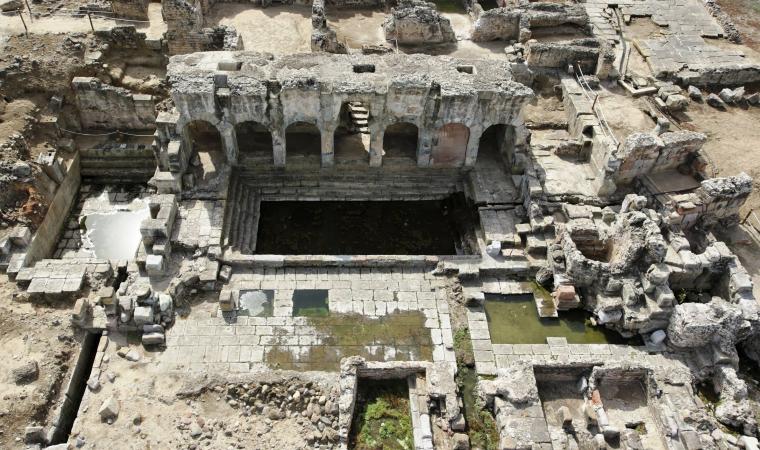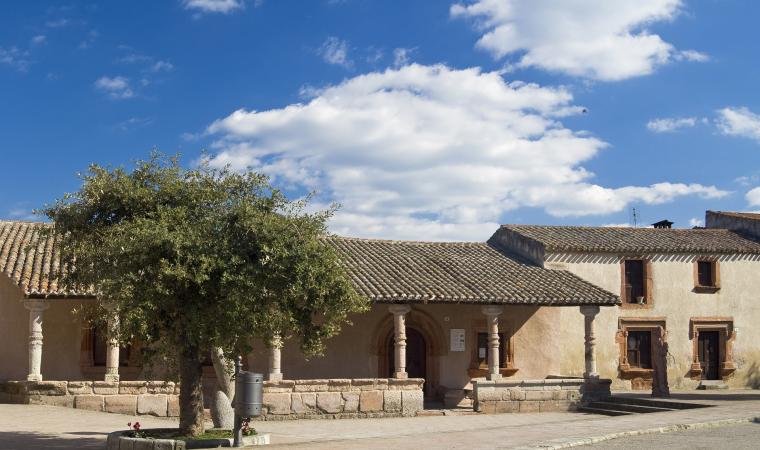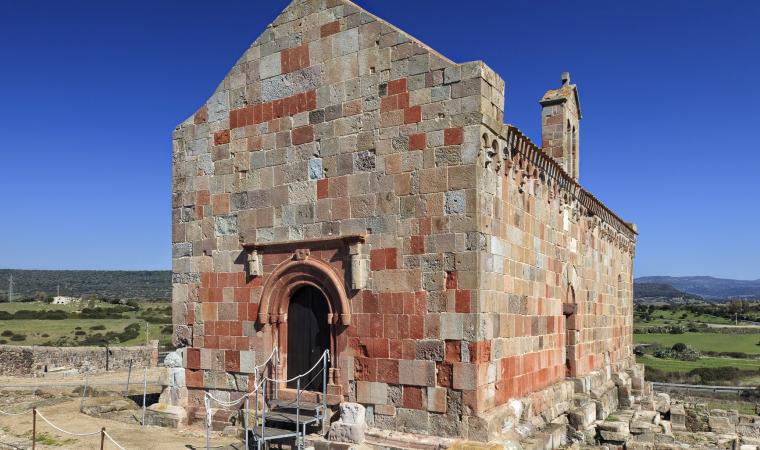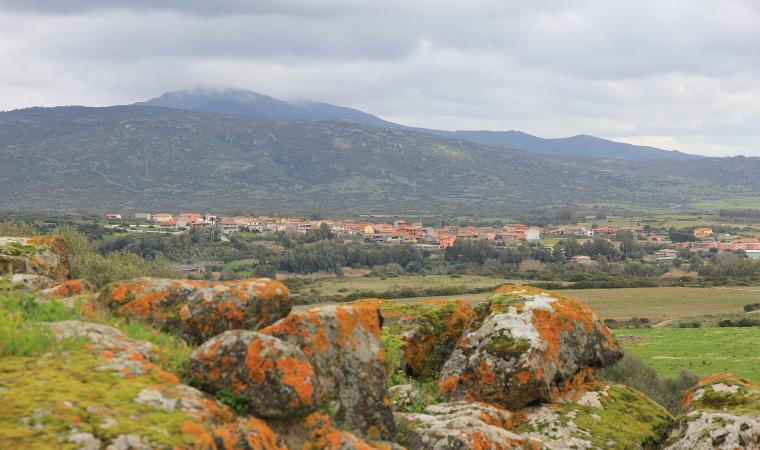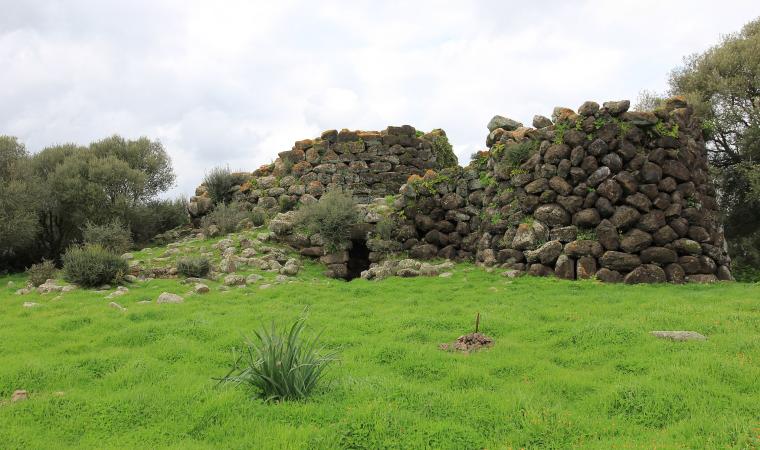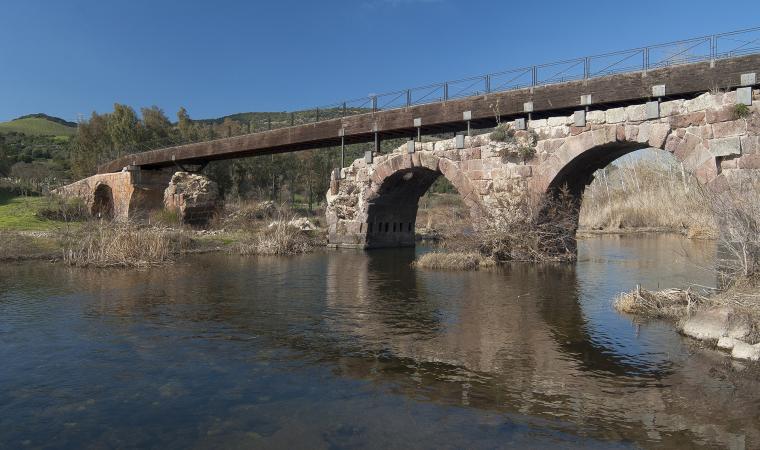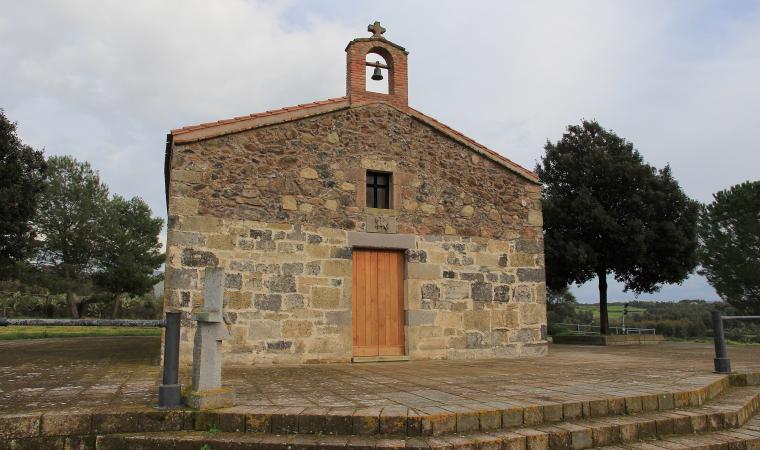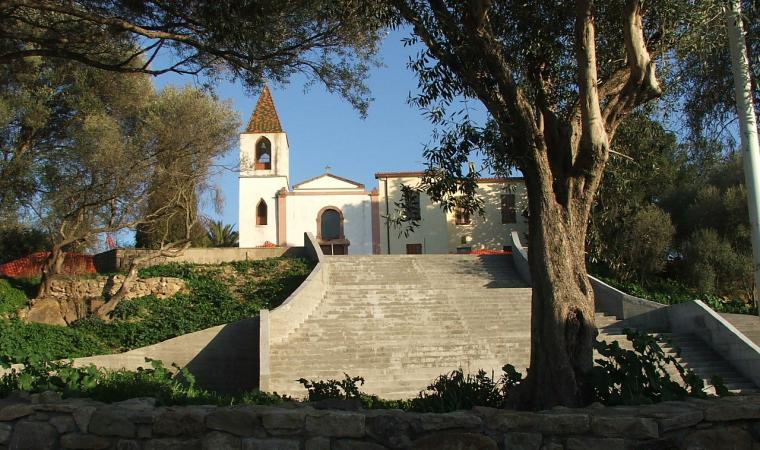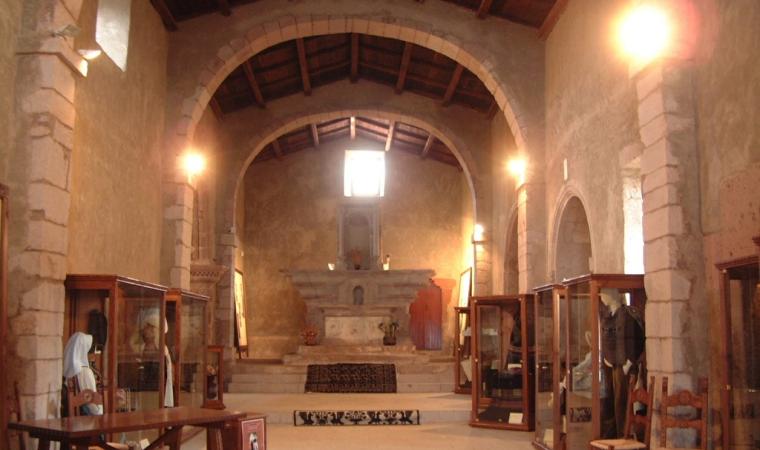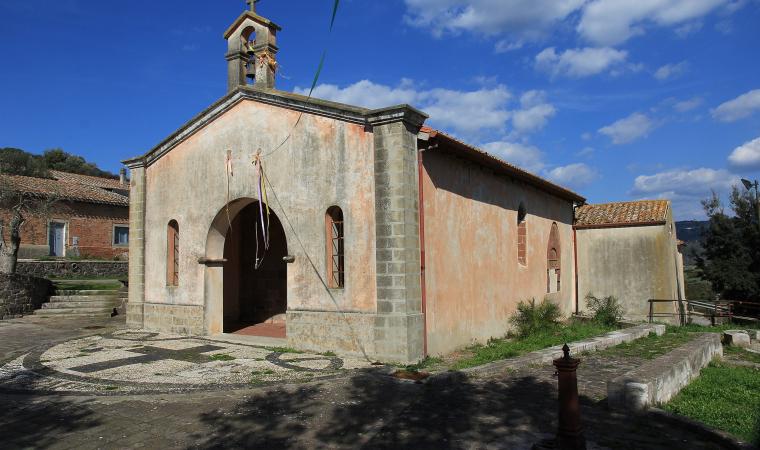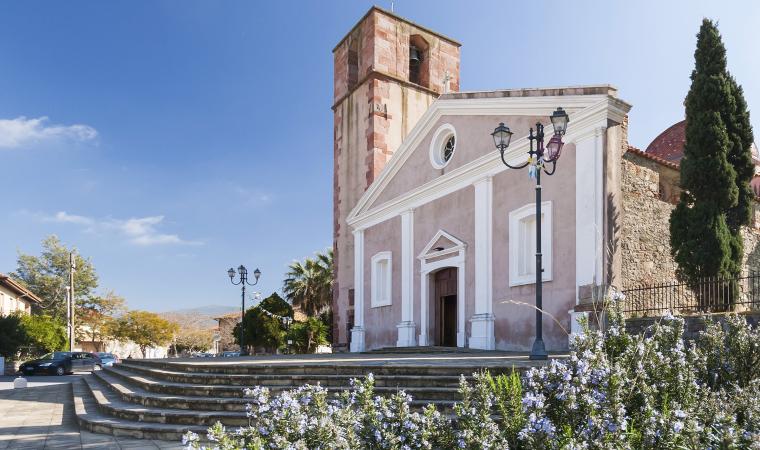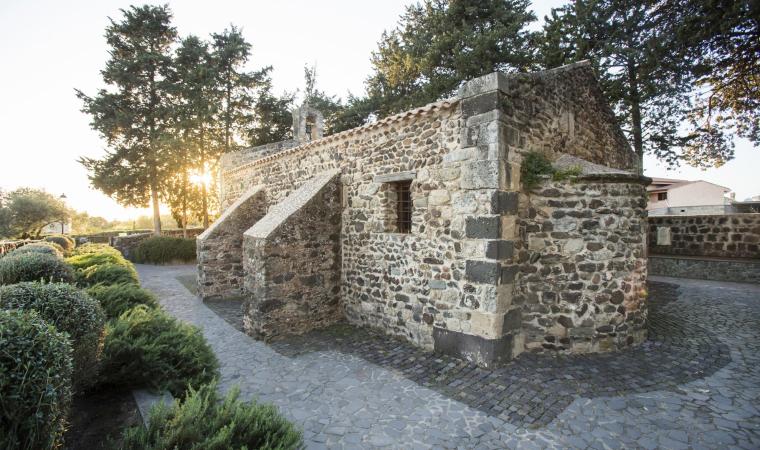The structural elements are similar to those of the better-known ‘historic’ manor houses in Sardinia, namely the dwellings in the Campidano area with lollas, meaning ‘courtyards’. The difference consists in the fact that here, in the Aragonese House of Fordongianus, they are organised in a completely different way. The courtyard is at the back and it is not immediately accessible by going through the portal. The arcade is not ‘hidden’ by the perimeter walls: you can admire it, in front of the entrance, elegant and welcoming with its seven columns and sloping tile roof. The other big difference compared to the typical Campidano houses is the building material: like various other buildings in Fordongianus, including the Churches of San Pietro and San Lussorio, the ‘Aragonese house’ was built from red trachyte.

